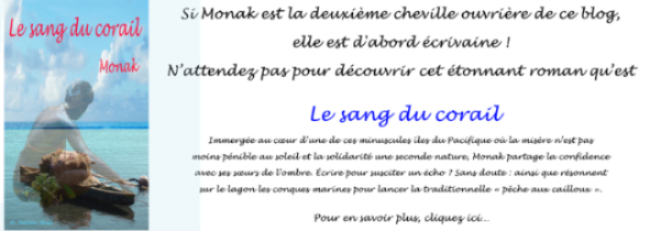Above the Pacific Ocean
Makatea, an island of the Tuamotu, gets a unique
geological formation, an exceptional industrial destiny and the only train of
Polynesian history.
This amazing island upsets
all the clichéd images which may be in your mind about the French Polynesia.
 |
| Makatea, an inaccessible atoll… |
Imagine
an atoll which would rise to 100 meters above the Pacific Ocean, posed as a
nest on impassable cliffs... Imagine outdated mining facilities, intact but
totally deserted, full-size museum to the glory of the industrial era… Imagine
a railroad track 7 km long placed on this tiny island of the Tuamotu…
Some pictures and some
music of Makatea
If
you get to imagine this, then you begin to get an idea of what’s Makatea
island, Tuamotu Archipelago, French Polynesia…
Makatea, a
geographical anomaly
From Polynesian origin, the
word “makatea” means a type of raised atoll with in its center the remains of
the former volcanic island.
Originally, therefore,
Makatea is an atoll like the others. This is the birth of the volcano that gave
the island of Tahiti which is the origin of the Atoll Makatea uprising. Then
the natural erosion did the rest.
Integral part of the Tuamotu
Archipelago, Makatea is the only island in French Polynesia of this geological
kind.
Covering an area of 24 km2,
it measures 7.5 km from north to south and 7 km in its widest point, the
southern part of the island.
 |
| A map that says a lot about an island like no other |
The special nature of the
coral base exposed to the air causes a number of geological peculiarities.
Firstly impassable cliffs, unique
in the whole Polynesia, peak between 60 and 100 meters high anyway. The coast offers
no bay, no beach that allows the approaching of boats and thus, a fortiori, to berth.
 |
| What remains of Temao port, today. |
In the center of the island,
a vast plain located 80 meters. One beach on the east coast to the only village
of the island: Moumu. In the northern part of the plateau, the mining village
of Vaitepaua completely abandoned. And finally, on the West coast at the foot
of the cliff, just in front of the single pass which allows to approach the
island: the small port of Temao where you can still see the remains of the
loading dam for transshipment of phosphate.
Makatea: story
of an atoll like no other
In 1722, after discovering
Easter Island, the Dutch explorer Jacob Roggeveen becomes the first Westerner
to accost Makatea.
The island is so daunting
with its high cliffs and lack of coves or bays for serene moorings that he does
nothing more than to note the event and the geographical position of the atoll
in his logbook. He calls it “Aurora”, which means “the island of recreation”.
 |
| Phosphate open pit mine of Makatea |
During the 180 years that
followed, Makatea named “Papa Tea” (White Rock) by the Polynesians, will hardly
disturbed by many people, despite the considerable changes that transform the
whole Polynesia. Thus, neither the evangelization nor the colonization will
change something in the way of life of a few dozen families who are living in
this strange as inaccessible land.
The fate of the island takes
off in the early years of the 20th century with the exploitation of
phosphate rocks, the deposit of which was discovered in 1860 by Captain Bonnet.
Therefore, nothing will ever
be the same in Makatea… at least until 1966 when the phosphate mining finally
ceased on the island.
 |
| From one end to the other of the island, the road (photo: Jan Erik Johnsen) |
At the last census of
Polynesian population (2007), there were 61 permanent inhabitants in Makatea.
Today, the island is visited
by the schooner (passenger-cargo ship), and therefore it’s just supplied, twice
a month, at most…
Wealth of an
island like no other
Nevertheless, Makatea holds amazing
wealths.
 |
| The coast (photo Jan Erik Johnsen) |
Thus, plagued by natural
erosion, the base of the island is full of caves, some of which aren’t even
listed. Further, below sea level, others have never been visited. All feed the legends
and strengthen the mysterious character of Makatea.
It is said as well as, in
bygone days, pirates and Spanish galleons have hidden treasures there. Some
were used as burial places for senior figures pre-European Polynesian
societies. Hung aloft, their bodies were deposited by “pirimato”, legendary
beings capable of flying to the most inaccessible places. Cave Ana tau i ra’i on
the cliff Temao is still tapu*
 |
| In 1959, Yves Allégret shots a film on Makatea |
On the other hand, it’s
interesting to note that this strange atoll has aroused the interest of several
filmmakers who have located their film action. Including “The ambitious”, Yves
Allégret with Andrea Parisi, Richard Basehard and Gerard O’Brien, shot in 1959
largely on the atoll of Makatea itself.
Remains only to discover the
amazing industrial adventure Makatea that for 60 years has been the main
economic engine of the entire French Polynesia.
An article
of Julien Gué
Translated from French by Monak
Glossary:
*Tapu: taboo
See also the Article
Tahiti.tv, with a 5‘30”video made from exciting archive footage by following
this link: http://www.tahiti.tv/makatea-lile-phosphate-permalink-1351-2373-6624.aspx. And of course our articles: “The
railway station of Makatea” and “Makatea
today”.
Copyright
Julien Gué. Ask for the author’s agreement before any reproduction of the
text or the images on Internet or traditional press.





















